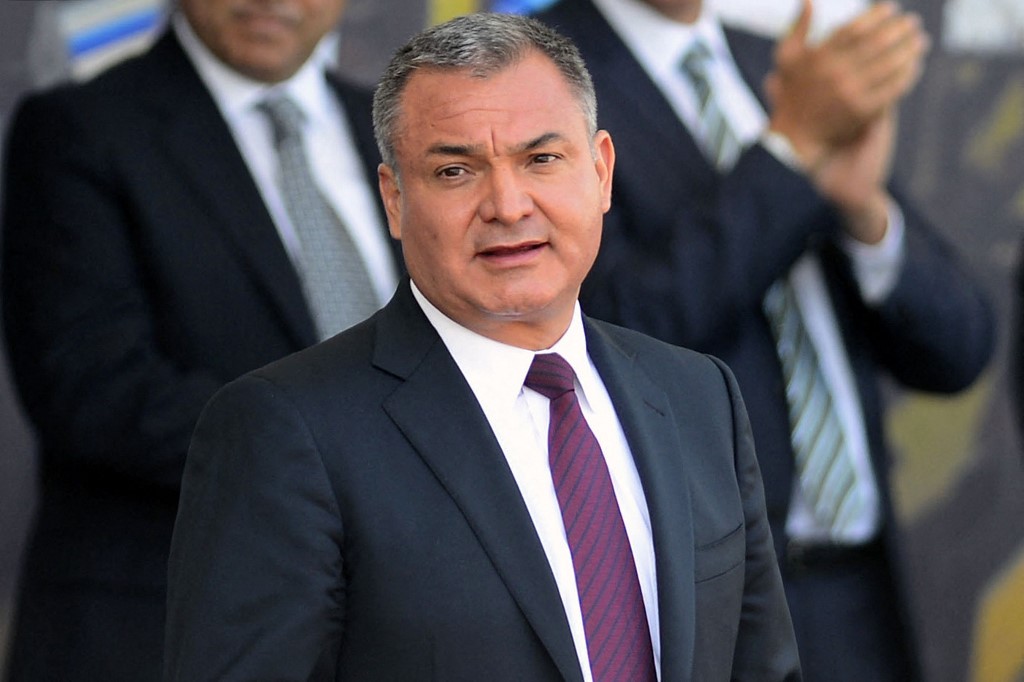
by Ana FERNÁNDEZ
Agence France-Presse
NEW YORK, United States (AFP) — A once-powerful Mexican government minister was convicted by a US jury Tuesday of aiding the very drug smuggling he was tasked with cracking down on.
Genaro Garcia Luna, public security minister under Felipe Calderon’s presidency from 2006 to 2012, was found guilty on all five counts following a high-profile trial in New York.
The month-long proceedings shone a spotlight on the corruption of the highest ranking Mexican government figure ever to face trial in the United States.
It also opened a window on the vast resources of the Sinaloa Cartel under Joaquin “El Chapo” Guzman, who is now serving a life sentence in a US penitentiary.
Garcia Luna was convicted of receiving vast sums of money to allow the cartel to smuggle tons of cocaine.
He sat impassively in Brooklyn federal court as the guilty verdicts were read out, his wife and two children looking on.
He is due to be sentenced on June 27 and faces a mandatory minimum term of 20 years imprisonment and a maximum of life behind bars.
“Garcia Luna, who once stood at the pinnacle of law enforcement in Mexico, will now live the rest of his days having been revealed as a traitor to his country and to the honest members of law enforcement who risked their lives to dismantle drug cartels,” said US prosecutor Breon Peace, welcoming the verdict.
A spokesperson for the current Mexican government, which has accused Garcia Luna of stealing more than $200 million of public funds and has demanded his extradition, said in a tweet that “justice has arrived.”
Prosecutors argued that Garcia Luna, who held high-ranking security positions in Mexico from 2001 until 2012, was the cartel’s “partner in crime.”
That included during his time as the architect of then-president Calderon’s crackdown on Mexico’s drug gangs between 2006 and 2012.
But instead of stopping the smuggling, Garcia Luna took millions of dollars in bribes from the Sinaloa cartel to allow safe passage of narcotics shipments.
Calderon late Tuesday sought to distance himself from his convicted former minister, saying in a tweet that he “never negotiated or made pacts with criminals.”
“I fought all those who threaten Mexico, including, of course, the so-called Cartel of the Pacific,” Calderon said, using an alias for the Sinaloa Cartel.
– FBI equivalent –
US government attorneys said Garcia Luna tipped off traffickers about law enforcement operations, targeted rival cartel members for arrest and placed other corrupt officials in positions of power.
The five charges ranged from cocaine trafficking conspiracy to making false statements.
“We are extremely disappointed in today’s verdict,” said defense attorney Cesar de Castro, who now has 45 days to appeal.
Garcia Luna served as chief of the Mexican equivalent of the FBI from 2001 until 2006, when he was elevated to become secretary of public security, essentially running the federal police force and most counterdrug operations.
Nine of the 26 witnesses who testified against Garcia Luna are accused drug traffickers extradited from Mexico and collaborating with US prosecutors in exchange for possible leniency in their own trials.
They included former several high-level cartel bosses, including Jesus “Rey” Zambada, Sergio Villarreal Barragan and Oscar “Lobo” Valencia.
They claimed to have paid millions of dollars to Garcia Luna collectively, and through Arturo Beltran Leyva, who ran his own drug cartel and served as a go-between with Garcia Luna, known as a “supercop,” in exchange for protection.
Garcia Luna, a mechanical engineer by trade, was detained in Texas in December 2019. He declined to testify on his own behalf.
The world’s biggest narcotics organization at one time, the Sinaloa Cartel moved multi-ton loads of cocaine each month from producing countries in the Andean region up through Mexico and on to streets in Europe and North America.
© Agence France-Presse








